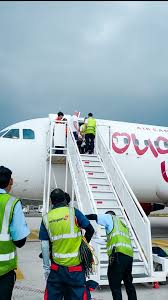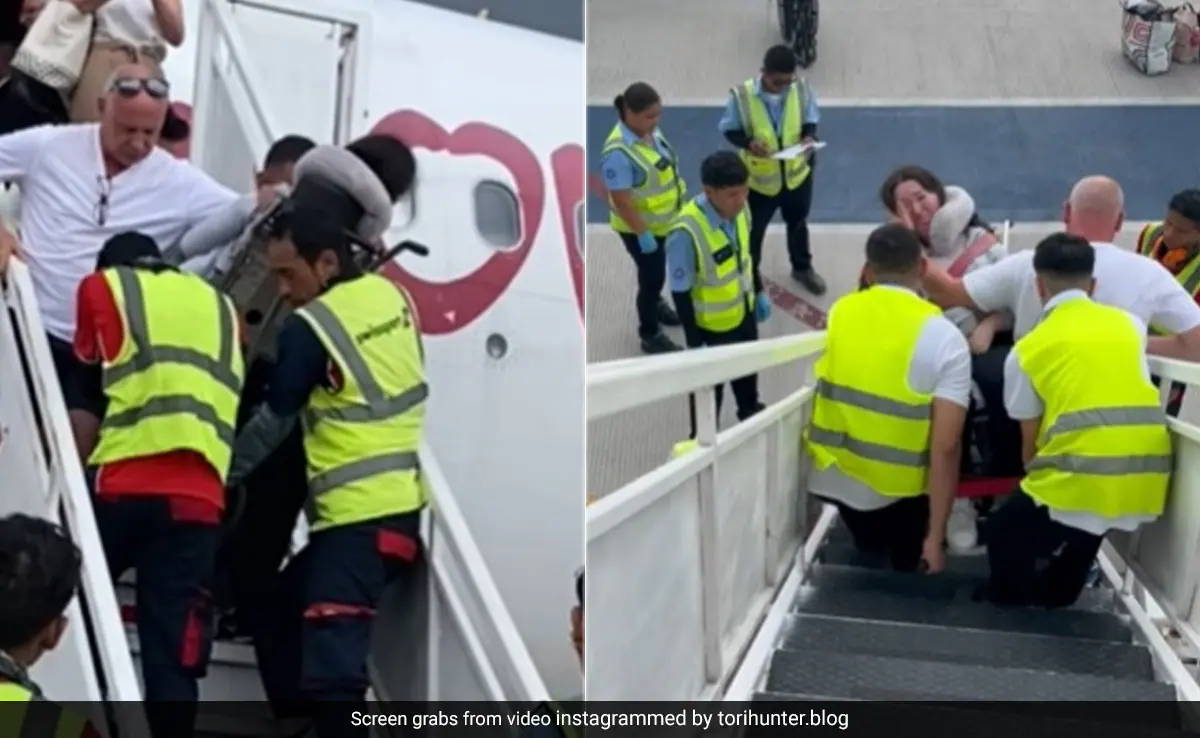In a world constantly on the move, the skies are not always friendly for everyone. Tori Hunter, a 26-year-old Canadian travel blogger and advocate for accessibility, recently brought to light the significant barriers that wheelchair users face when flying. Her distressing ordeal during a flight disembarkation in Costa Rica has sparked a broader conversation on the need for more accessible air travel.
Tori Hunter’s Terrifying Experience
Tori Hunter’s journey took an alarming turn when she was carried off her flight on an inadequately equipped aisle wheelchair, after landing at an airport in Costa Rica. The lack of a jet bridge forced all passengers, including Hunter, to exit the plane using stairs—a daunting challenge for someone with limited neck movement due to spinal muscular atrophy. The video Hunter shared on Instagram captures her visible distress and the precarious nature of her disembarkation, highlighting the risks involved in such transfers.

The Plight of Wheelchair Users in Air Travel
Wheelchair users often face significant challenges when traveling by air. These include:
- Inadequate Equipment: Hunter’s aisle wheelchair lacked essential features like armrests and functional straps, increasing the risk of injury.
- Unsafe Transfers: The absence of jet bridges or suitable lifting equipment at some airports necessitates risky physical transfers, exacerbating the discomfort and potential danger to passengers with disabilities.
- Handling of Mobility Devices: Wheelchairs are typically stowed in the hold and are not always handled with the care they require. The U.S. Department of Transportation reported that in 2023 alone, 11,527 wheelchairs were damaged or lost.
Advocating for Change
The incident has reignited calls for improvements in airline accessibility. Rights on Flights, a global initiative dedicated to accessible air travel, has expressed frustration over the recurring issues faced by disabled passengers. The group advocates for systemic changes that would allow passengers to remain in their wheelchairs during flights, thereby eliminating unsafe transfers.
Airline and Airport Responsibilities
Following the incident, Air Canada acknowledged the challenges presented by the lack of an aircraft bridge and committed to reviewing its accessibility procedures, particularly at smaller foreign stations. The airline emphasized its adherence to protocols for assisting passengers with disabilities but recognized the need for enhanced cooperation with airport authorities to ensure safer and more consistent services.
The Bigger Picture: A Call for Global Standards
Hunter’s experience underscores a crucial gap in the aviation industry: the lack of standardized global protocols for the handling and accommodation of passengers with disabilities. Advocates argue that integrating universal design principles into aircraft and airport infrastructure is not only a matter of convenience but a fundamental issue of human rights.
Moving Forward: The Path to Inclusive Skies
As the conversation around accessible air travel gains momentum, it is clear that significant changes are needed to make the skies friendly and safe for all travelers. Stakeholders, including airlines, airport authorities, and regulatory bodies, must collaborate to create environments where the dignity and safety of passengers with disabilities are prioritized. For advocates like Hunter, the journey continues—not just across the globe but toward a future where air travel transcends limitations, not enforces them.

